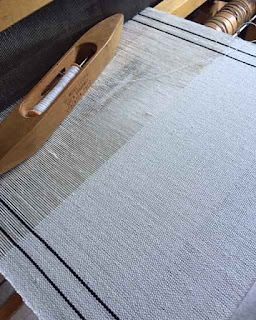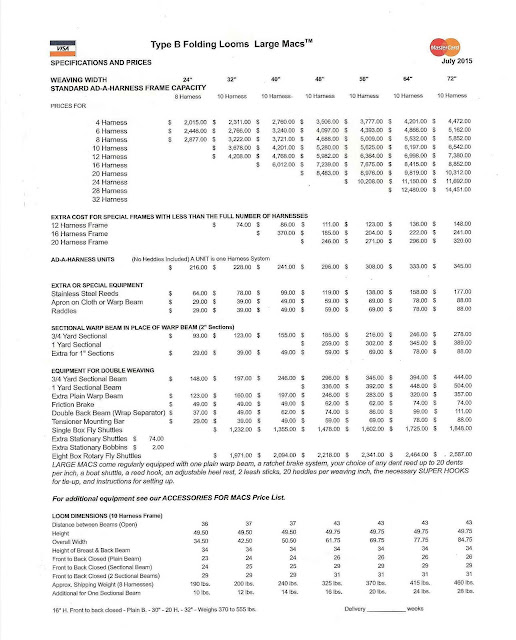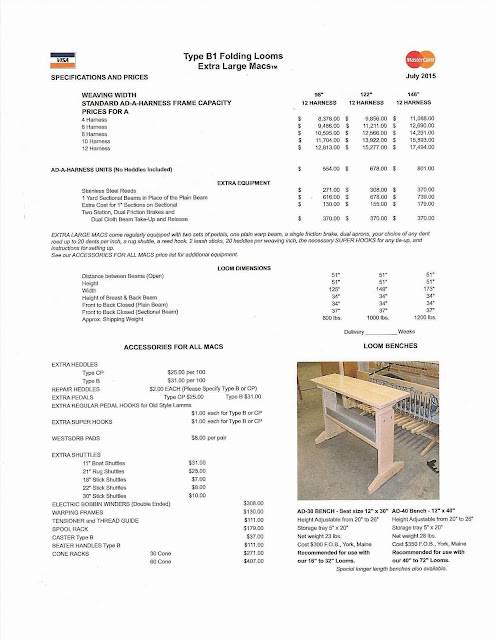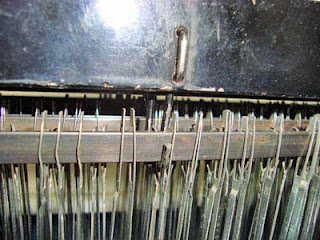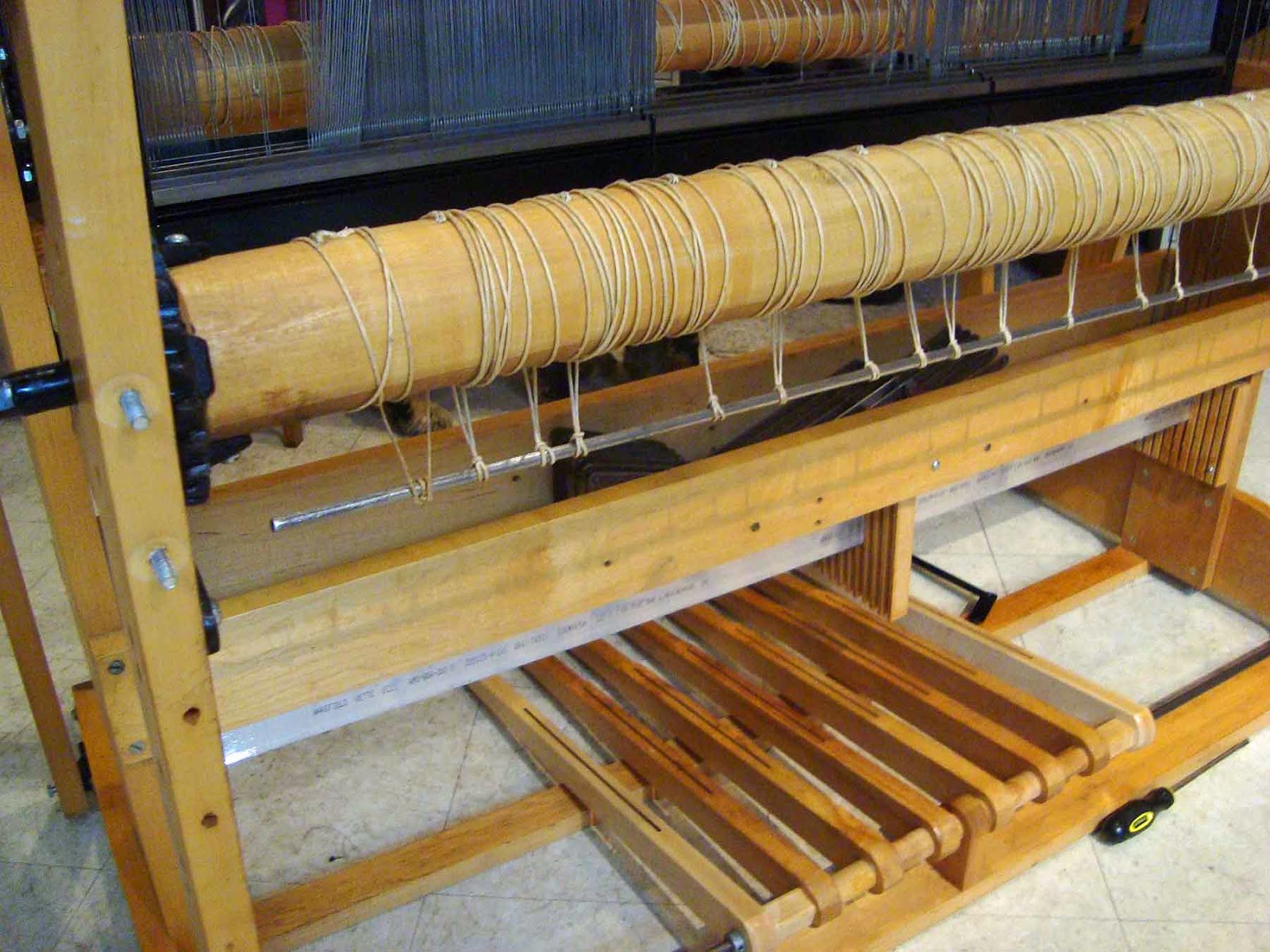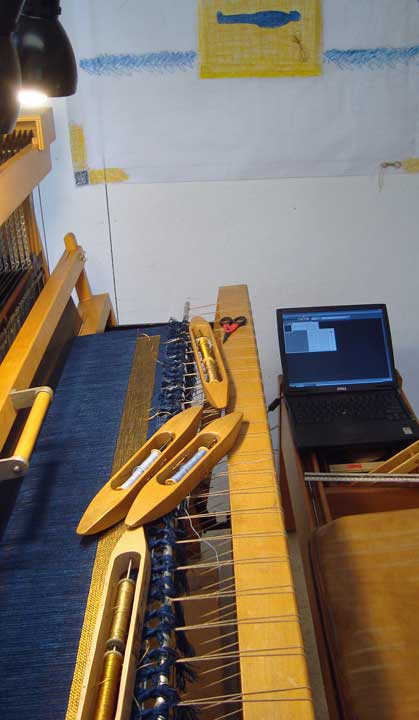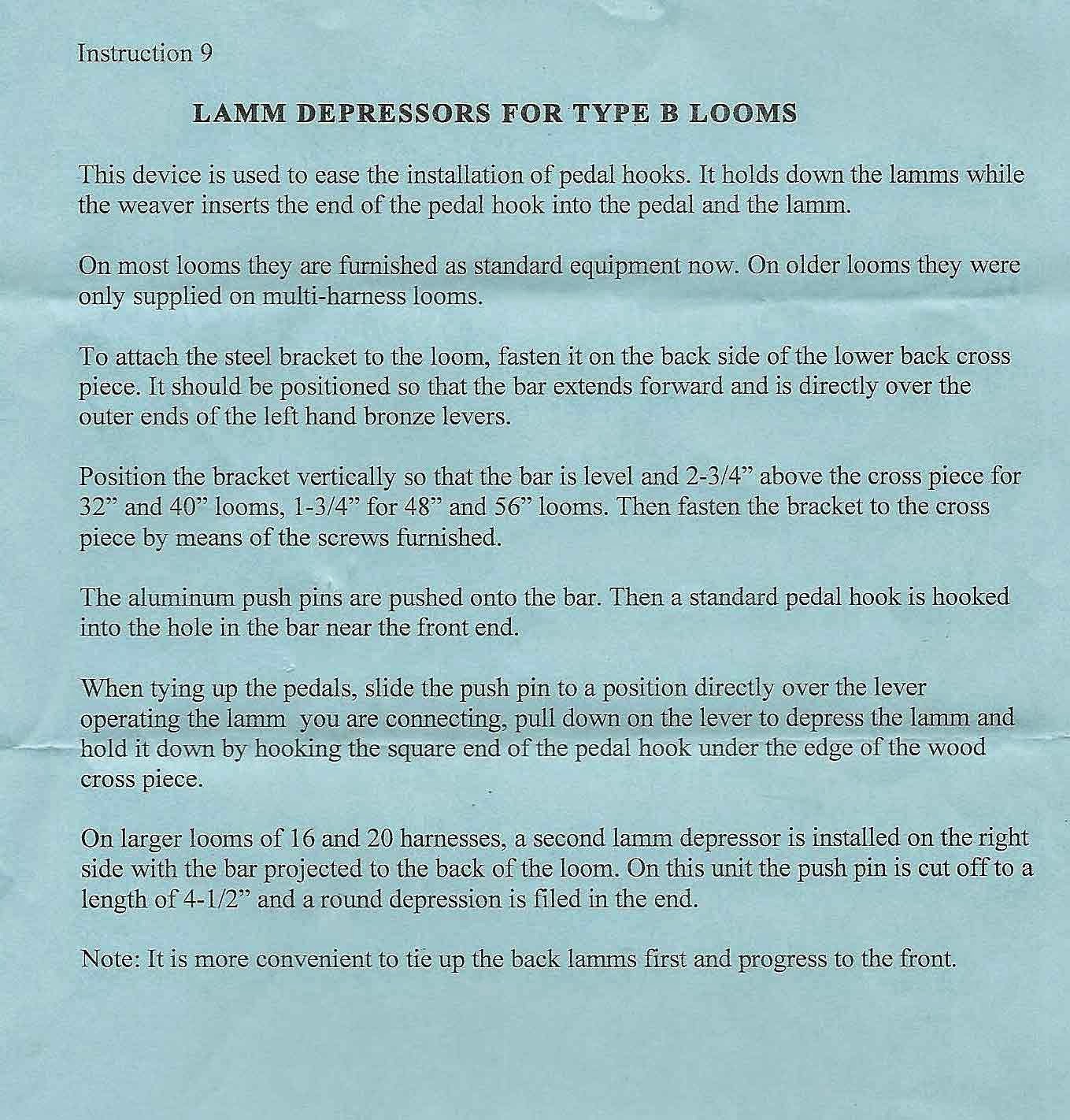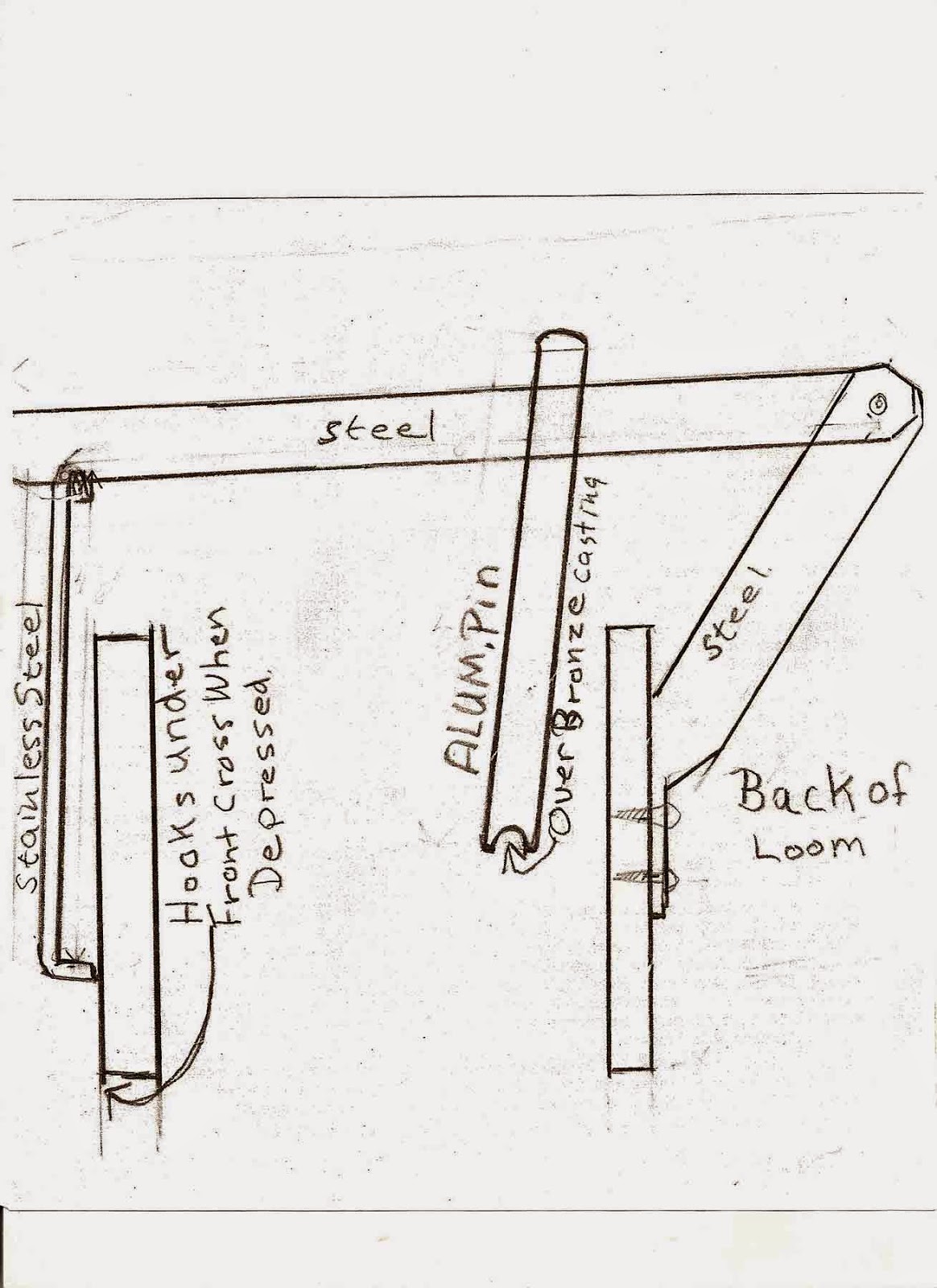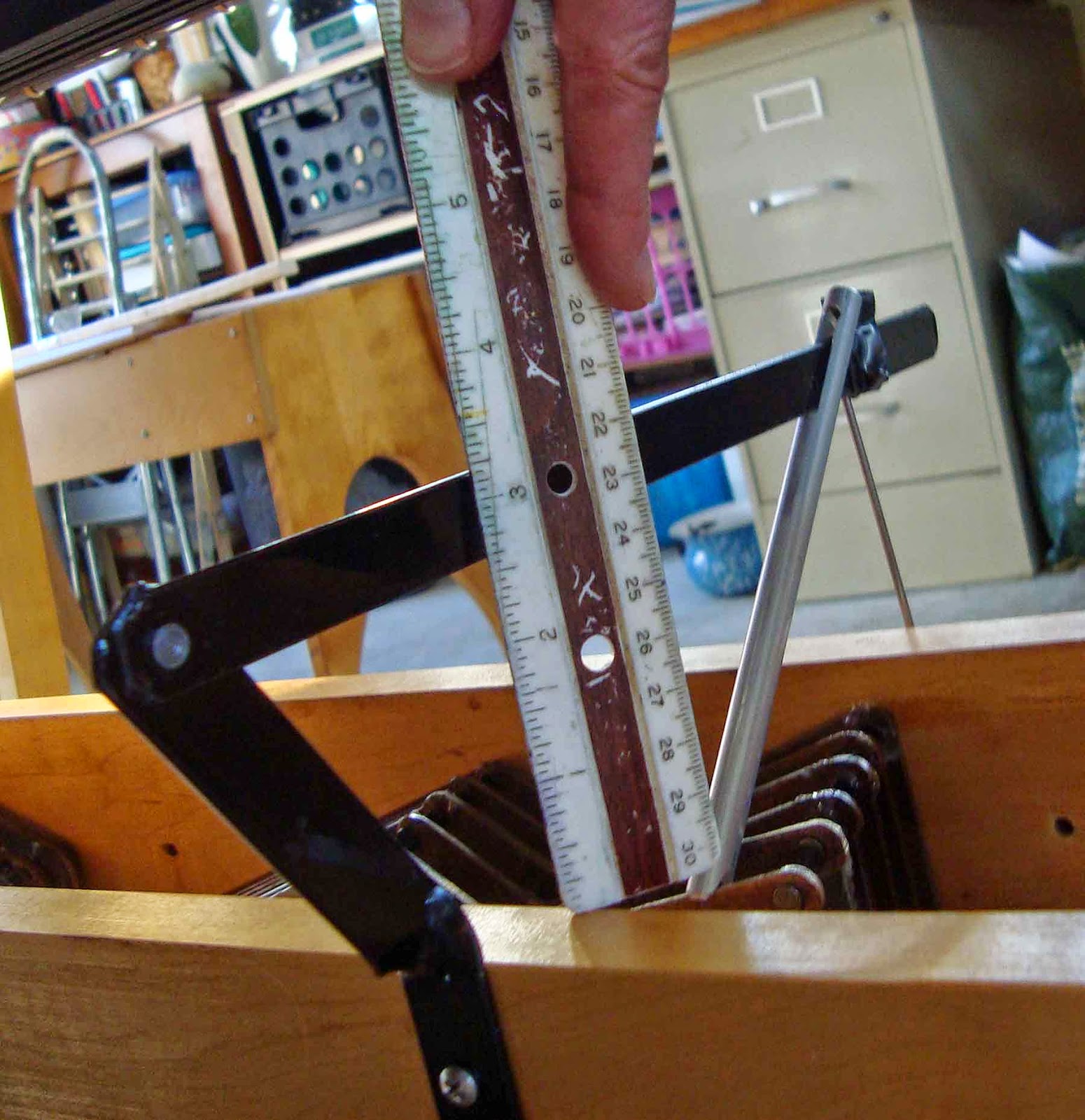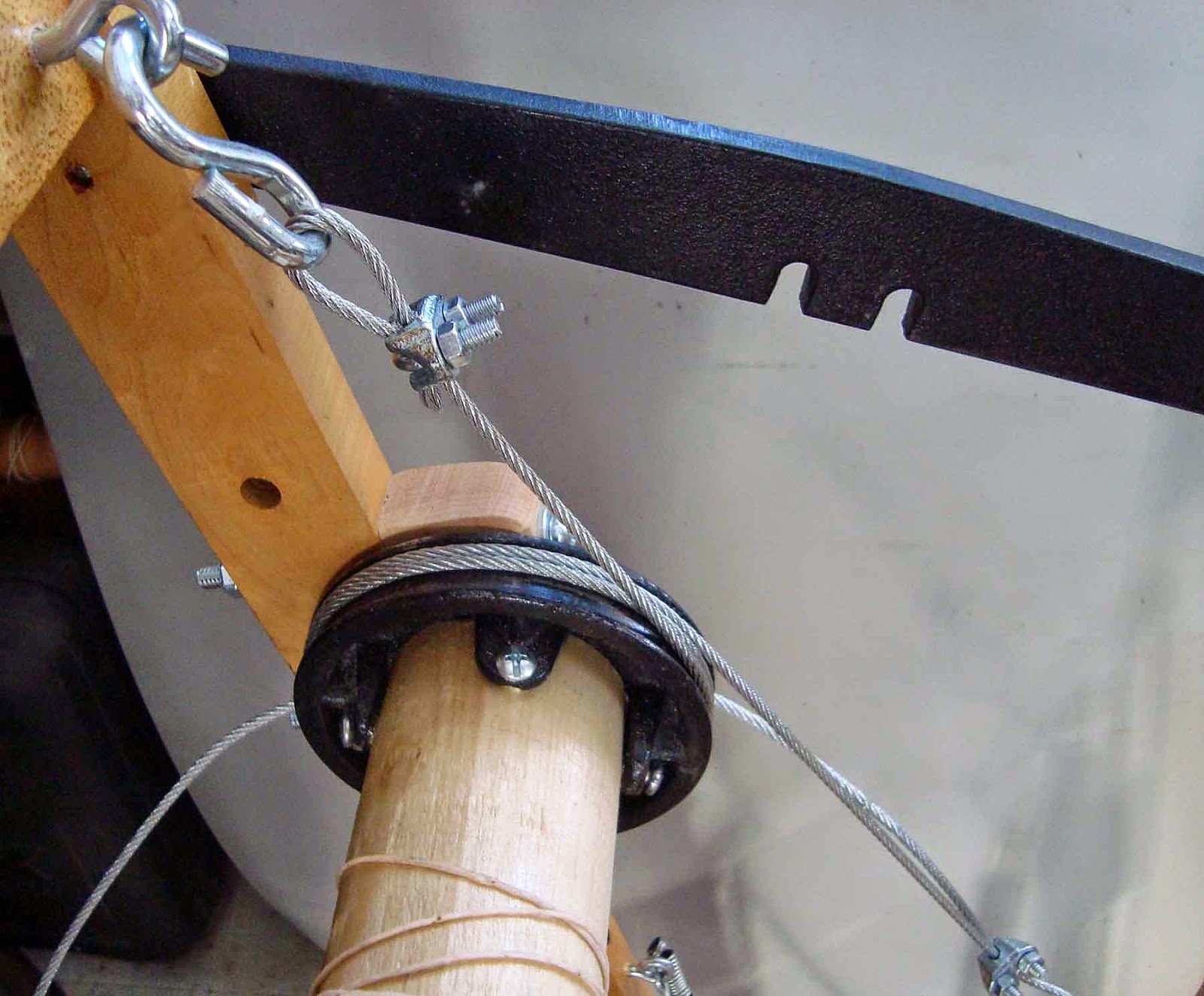The first adaptation is a device built by local weaver Dawne Wimbrowe and a colleague - she calls this device Tempo Treadle. Here is a quote from her blog that helps explain what it does for weavers - "TempoTreadle is a very unique solution for hand weavers with traditional looms who want just a bit of technology to help make the weaving process more enjoyable, without fear of treadling mistakes.
Here is a link to Dawne's blog that will help explain it all! Please it check out!
The second adaptation called Trapeze Warping - is especially for those who find warping long warps alone a challenge. I think this set-up has been around a while - but it is new to me! Check out the above link to Weavolution for the discussion on this style of warping that uses weights and distance to create a steady tension for warping on your loom. There are also videos on UTube and books on this topic.
The trapeze set up here is on loom in Holliston, MA. The cool thing is that this trapeze was built from recycled parts - including the boom from a small sail boat!
Both of these adaptions might be beneficial for you and your weaving! Let me know what you think! Meanwhile in my own studio - I am back from my solo studio time at Hambidge. What an amazing experience - I think that subject warrants its own blog post!
Since I have been home I have been working on launching a new community art project called "Well Used, Well Loved" - a project that explores age and beauty via hand-woven dishtowels.
 |
| Eight dish towels ready to be used and loved. |
More soon!
Sarah

